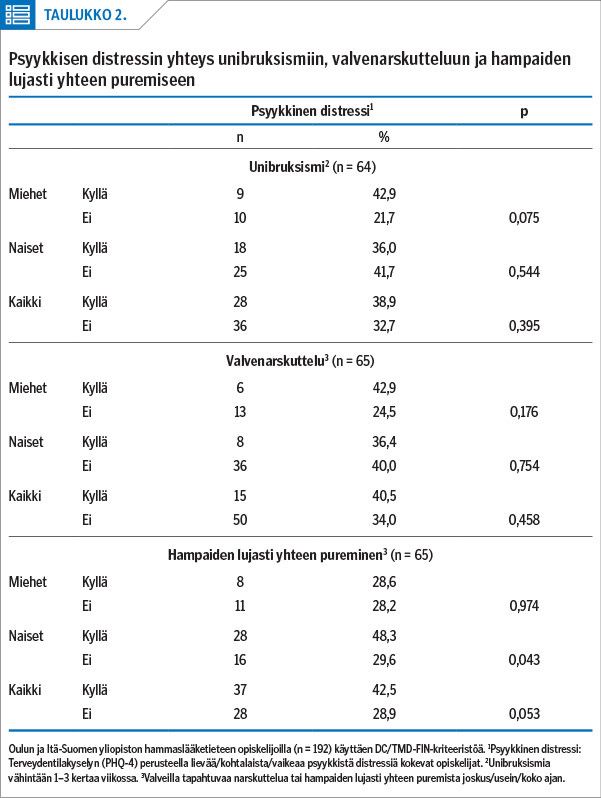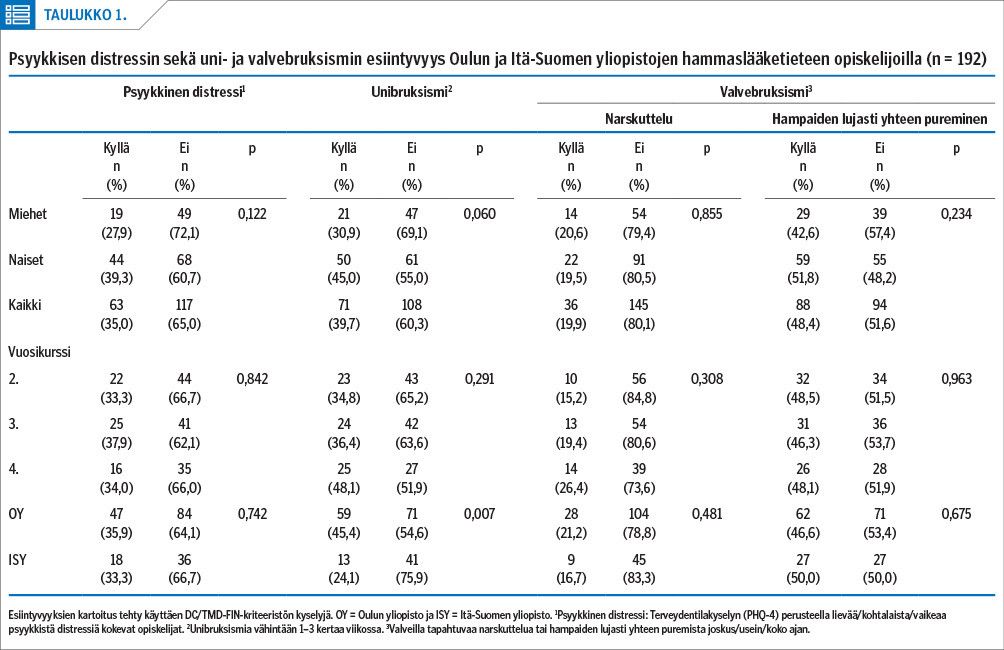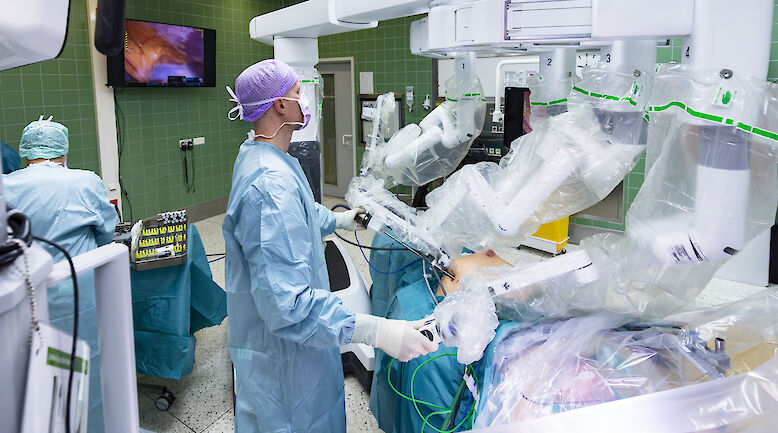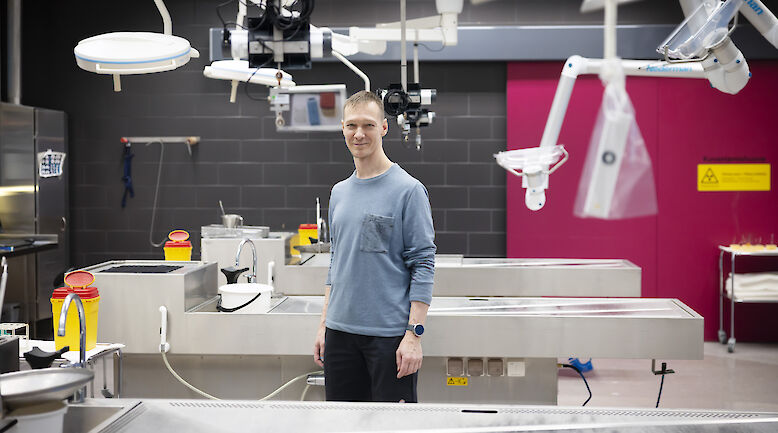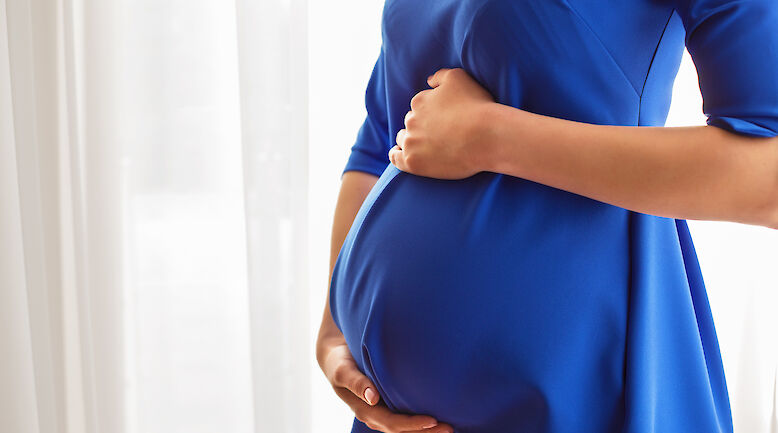Sleep and awake bruxism and psychological distress in dental students

Background Bruxism is defined as repetitive jaw-muscle activity characterized by clenching or grinding of the teeth while either awake or asleep. The aetiology of bruxism is multifactorial and the central nervous system plays an important role. Psychological factors, such as depression and anxiety symptoms, are related to awake and sleep bruxism. Awake bruxism can be grinding or clenching of the teeth. The aim of the study was to examine the prevalence of awake and sleep bruxism and the association of self-reported bruxism with psychological distress in dental students.
Methods Altogether 192 dental students from the University of Oulu and the University of Eastern Finland participated in the study. Bruxism and distress were reported using questionnaires included in the Diagnostic Criteria for Temporomandibular Disorders (DC/TMD).
Results The prevalence for self-reported sleep bruxism was 39.7%, for awake grinding of the teeth 19.9% and for clenching of teeth 48.4%. Of the students, 35.0% had at least mild psychological distress. Among women, clenching of teeth had a statistically significant association with psychological distress.
Conclusions Awake bruxism is associated with psychological distress and this should be taken into account in the treatment of bruxism.
